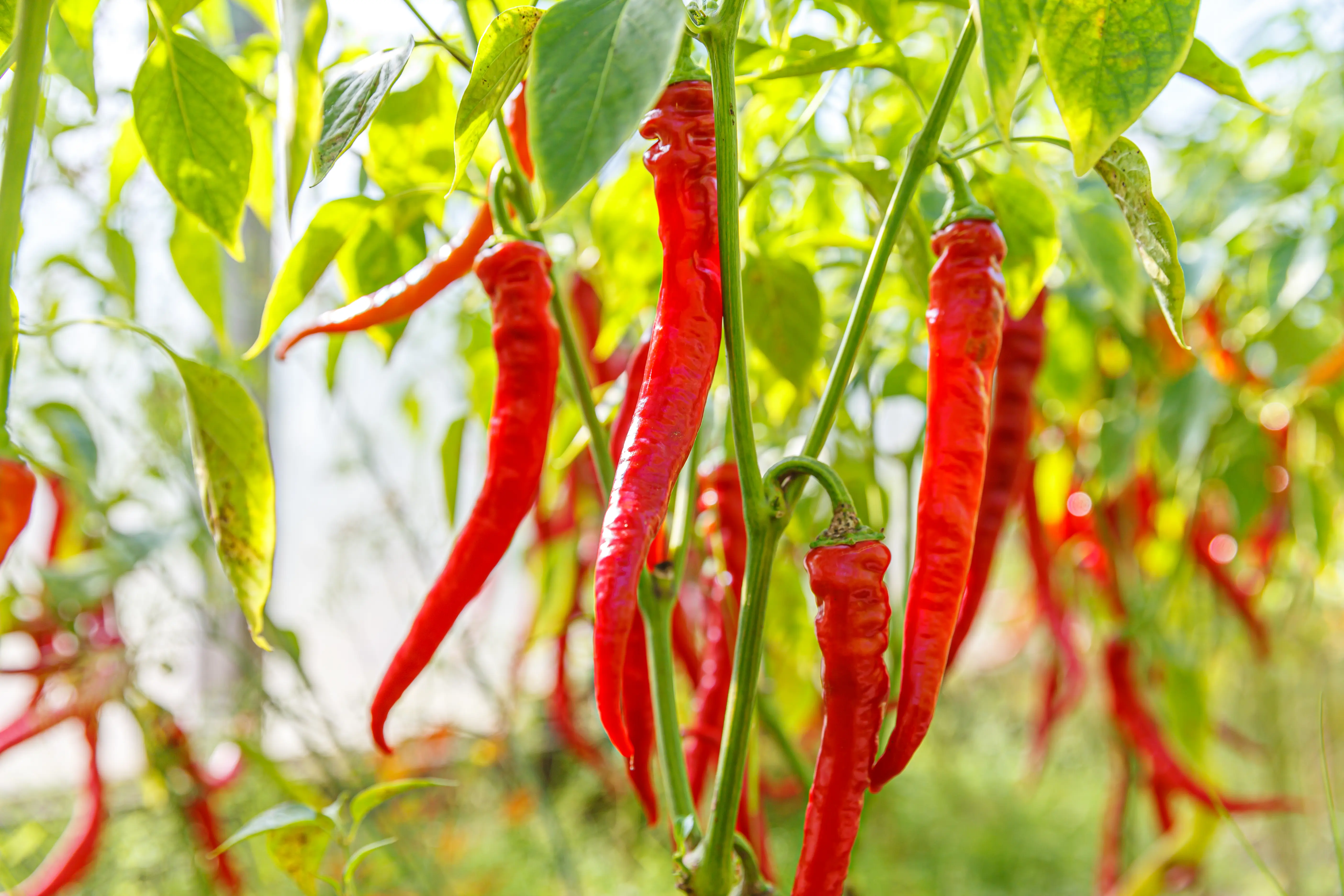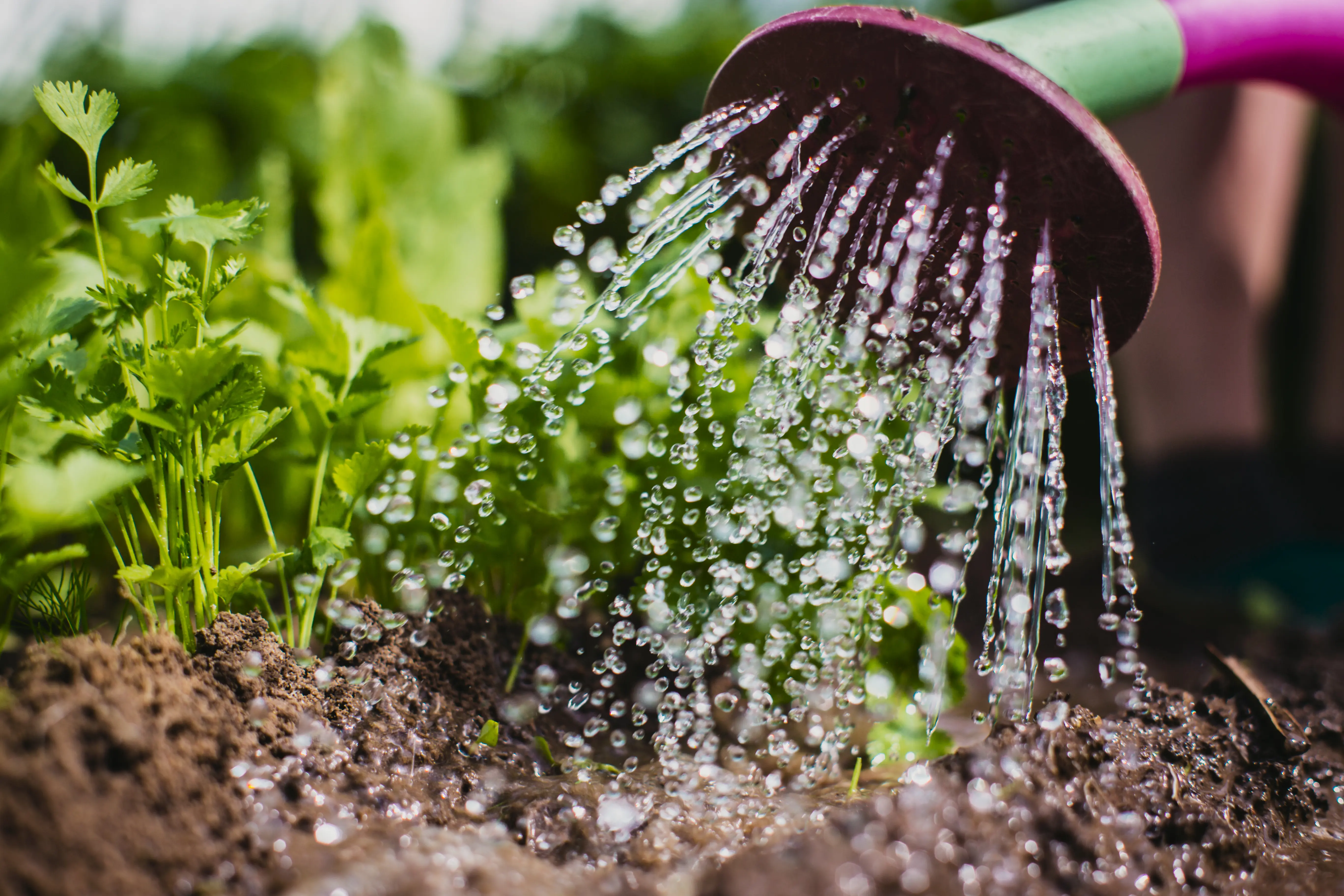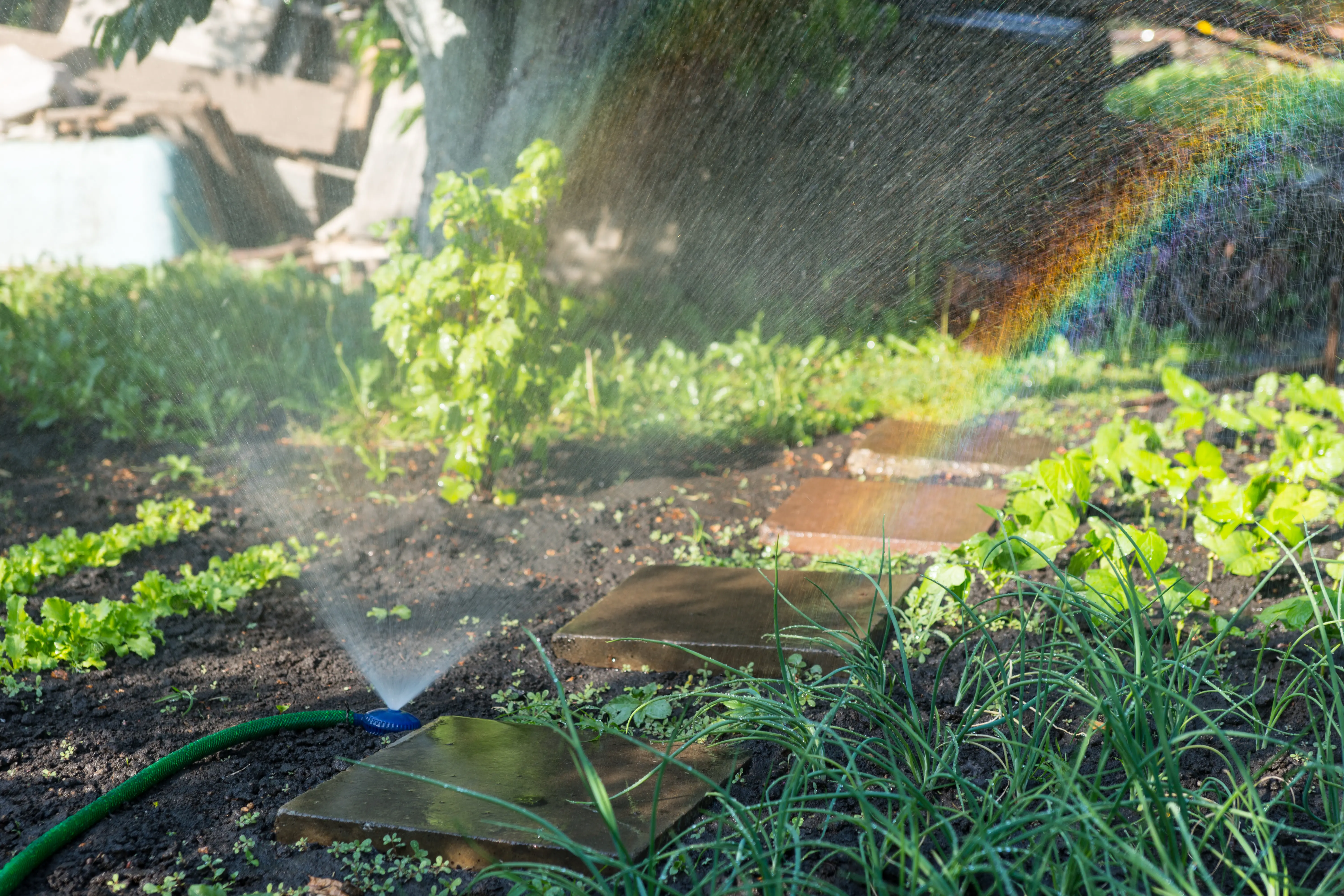While some areas (like my own) have been experiencing an unusually cool, wet growing season this year, many gardeners are in the midst of heatwaves and drought. Heat waves can be one of the most frustrating things to deal with as a gardener. You can be doing everything right- ensuring your plants are off to a good start, keeping them pruned, trellised, and weeded, but once extreme heat hits gardening can become a battle for survival. The good news is there are many techniques we can use to help our plants cope with a heat wave.
Heat and drought can affect your plants in several ways. Every plant has an optimal growing temperature range- if temperatures exceed this range their growth will slow down and eventually stop (even if they have access to water). Some plants such as tomatoes and peppers will drop their flowers and fruit when the temperatures get too hot- so even if the plants are hanging in there they could struggle to produce a harvest. Other plants such as lettuce and leafy greens will bolt more quickly under stress caused by heat and drought. If there isn’t enough water available in the soil plants won’t be able to grow as fast as they otherwise would. Instead they try to preserve as much water as possible- and they might show symptoms such as curling leaves and wilting. To top it off, the heat can herald a whole different set of pest and disease issues that can take advantage of stressed-out plants. So how do we help our plants stay productive and healthy when the weather feels desert-like?
One of the best things we can do as gardeners to help our gardens manage through the heat is to make sure the garden is planned with the seasonal temperatures in mind. It’s important to remember that plants can be categorized as cool-season plants and warm-season plants. While there’s no rule that says you can’t grow cool-season plants in the warmer parts of the season, they will need more TLC to survive and stay productive. In other words, don’t beat yourself up if your lettuce kicks the bucket in a heat wave- it’s somewhat expected. Check the list of plants in Planter to see which plants are cool-season versus warm-season.
Warm-season crops generally grow better at higher temperatures, but even they have their limits. If you live in a particularly hot climate and tend to experience extreme high temperatures, you will want to research your plant and variety carefully to make sure you are growing plants that are adapted to your local conditions. Use notes and events in Planter to keep track of which varieties are performing well in the heat versus which are struggling, and reach out to experienced gardeners in your area for variety recommendations for upcoming years.

And while that’s all well and good, what’s a gardener to do when the plants are already in the ground and the high temperatures are rolling in?
The most important thing we can do to give our plants a helping hand is to make sure they have consistent access to water. Unfortunately watering is much harder to keep up with in the heat as the plant uses up more water and water evaporates faster from the soil. You might need to water every day, or in some cases even multiple times a day to keep the ground moist (don’t go overboard though!) Container plants will be especially prone to drying out- you may even want to consider putting them in a kiddie pool and filling it with a few inches of water if you’re not home to water them midday. While early morning is recommended as the best time to water, when it comes to surviving the heat you’ll need to give your plants water whenever they need it. Don’t believe myths that you can’t water in the middle of the day. If your plants are in dire need of water as long as you provide ample cool water they will appreciate the drink (don’t use hot water that sat in the hose outside all day!) While you may need to water more often during a heat wave and drought, you still want to make sure you are watering deeply to encourage your plant roots to go down deep to find water. Use notes and events to keep track of watering if you’re prone to forgetting which garden areas received water when, and for more info on deciding when and how much to water check out Watering: More than a Garden Chore.

Another key to combating the heat is to make sure your gardens have been mulched to keep the soil cool and to help keep water from evaporating as much as possible. Not only will mulch help your plants stay cool, but it also helps to keep weeds at bay. And while you may not feel like weeding in the heat, weeds do steal precious moisture and nutrients from your plants when they need it most. So get out there in the early morning or evening when the sun is less intense and try to reign in any weeds.
It can also be helpful to create shade for our plants to help keep them cooler. While most veggie plants appreciate full sun (with some exceptions), if the sun is causing them to overheat and suffer then creating shade can be helpful. While you can use shade cloth to cover entire sections of your garden, you can also DIY some shade with found materials around the house. Just be sure that anything you use provides ample ventilation and still allows some sun to reach your plants. You can also move your container plants to a partially-shaded location temporarily– this has the added benefit of keeping them from drying out as quickly.
Last but not least, if you are transplanting or seeding new plants in a heat wave, bear in mind that they will need extra-special watering attention to survive. If the heat will subside in a few days it would be better to wait until then to do your planting, but if the heat is unrelenting you might have no choice. Planting in the early evening can help to give them at least a few hours to settle in before the sun comes up the following day.
While it’s good to do what we can to help our plants through the heat, even the most experienced gardeners can have plants succumb to heat and drought. So don’t take it as a failure if some of your plants are struggling- count every plant that powers through as a win, and chalk the rest up to a learning experience for future years. Helping your plants beat the heat is challenging- especially when we don’t feel like being out in the heat either- but your efforts can be crucial to save your harvests!
